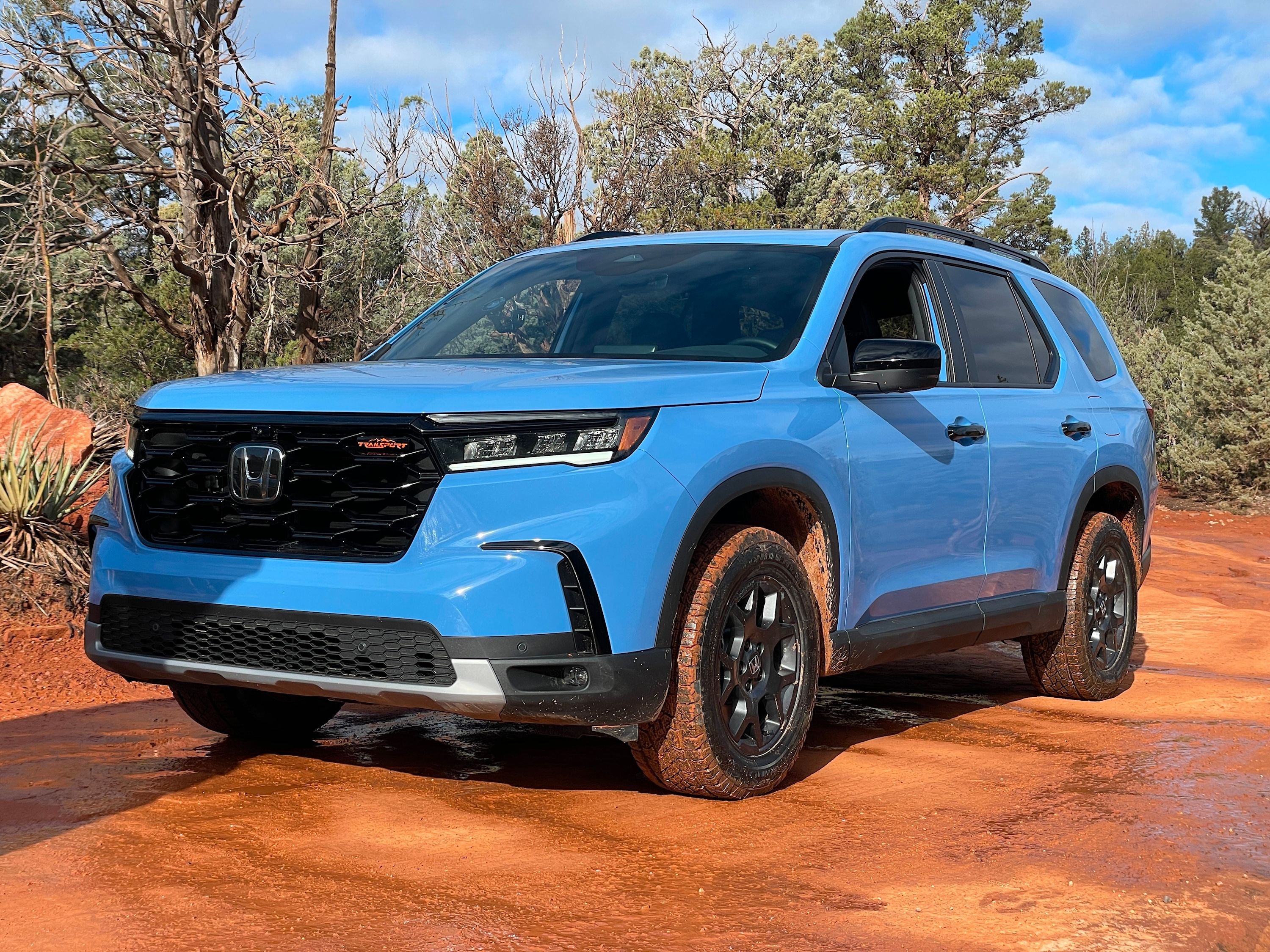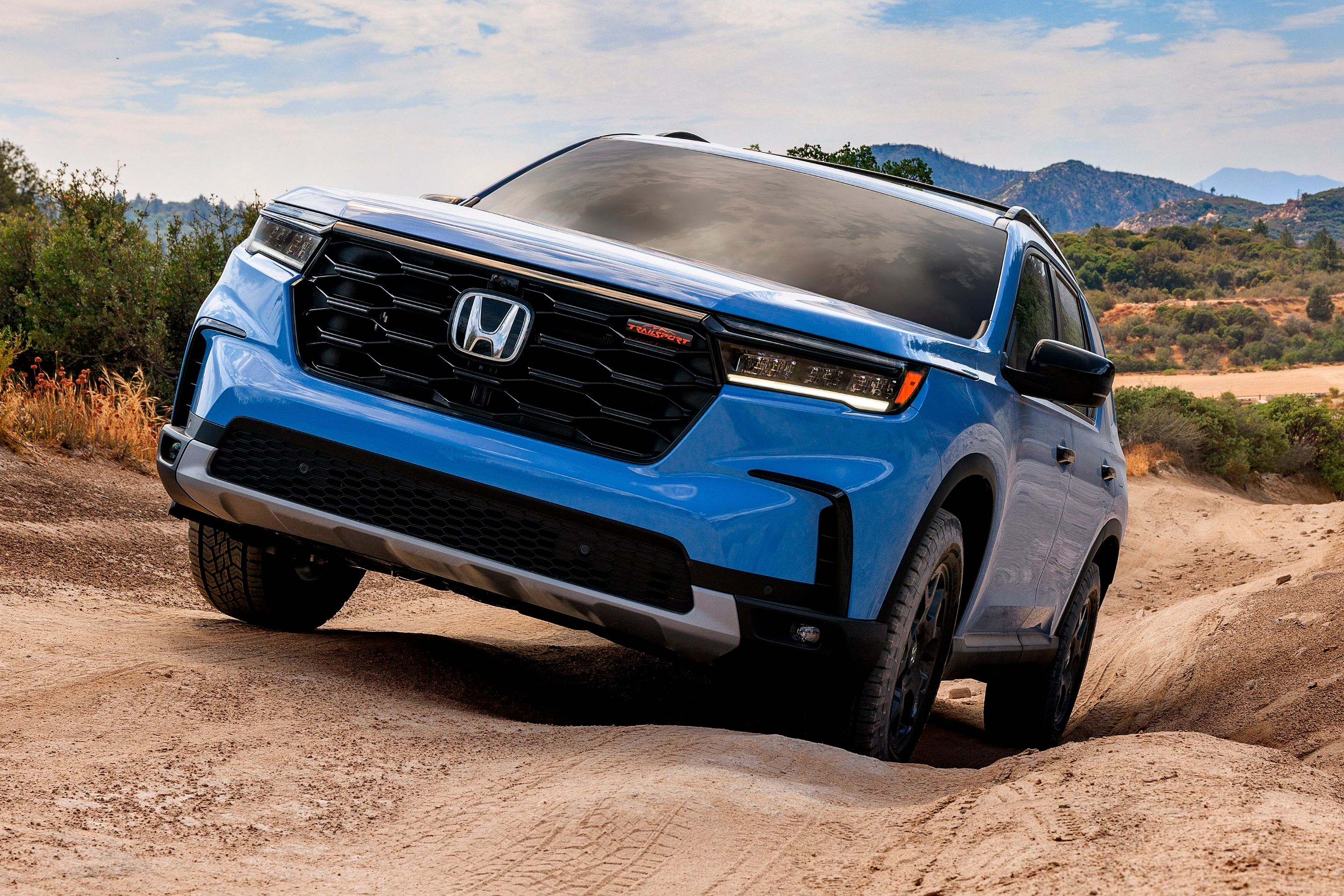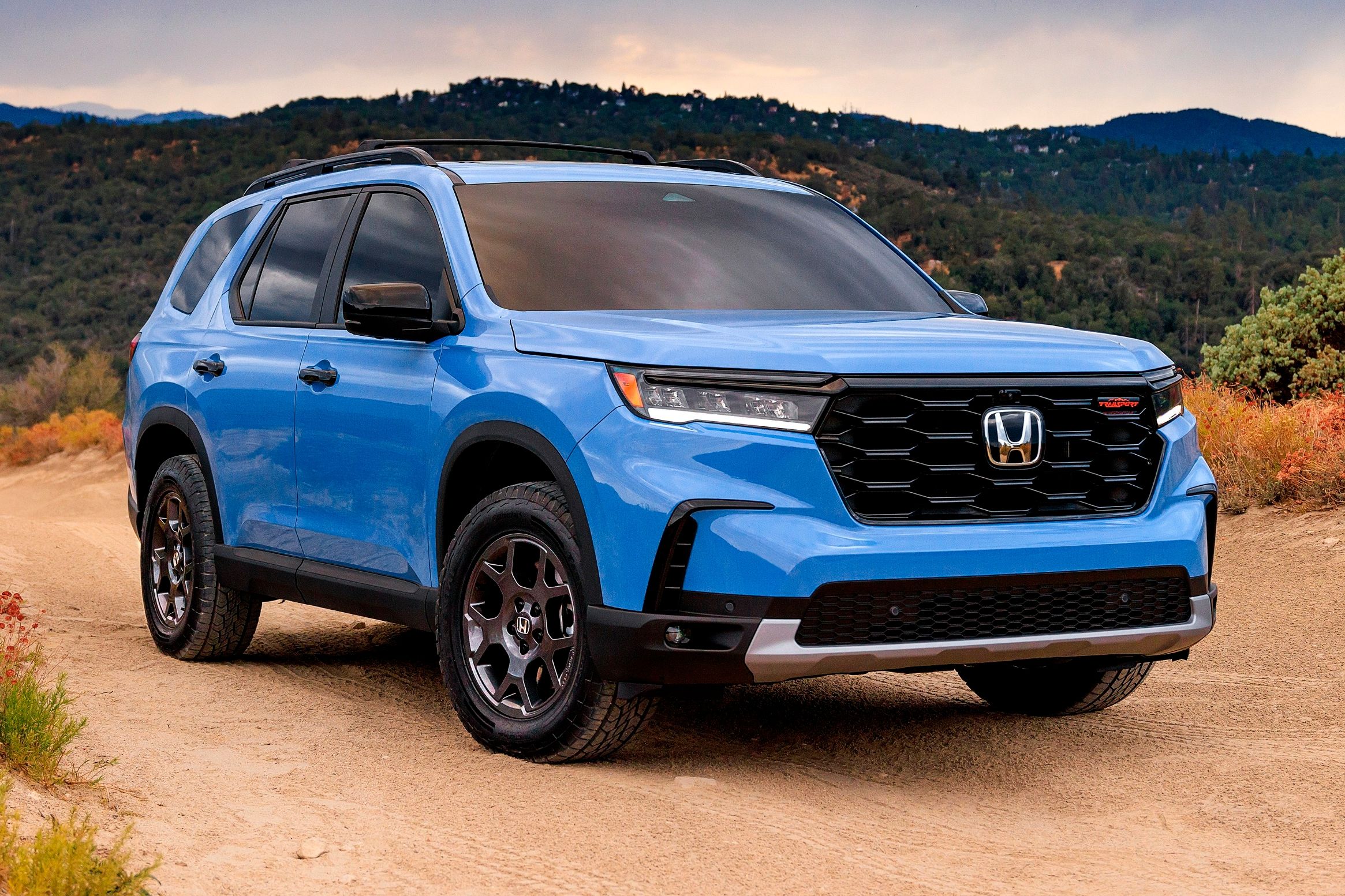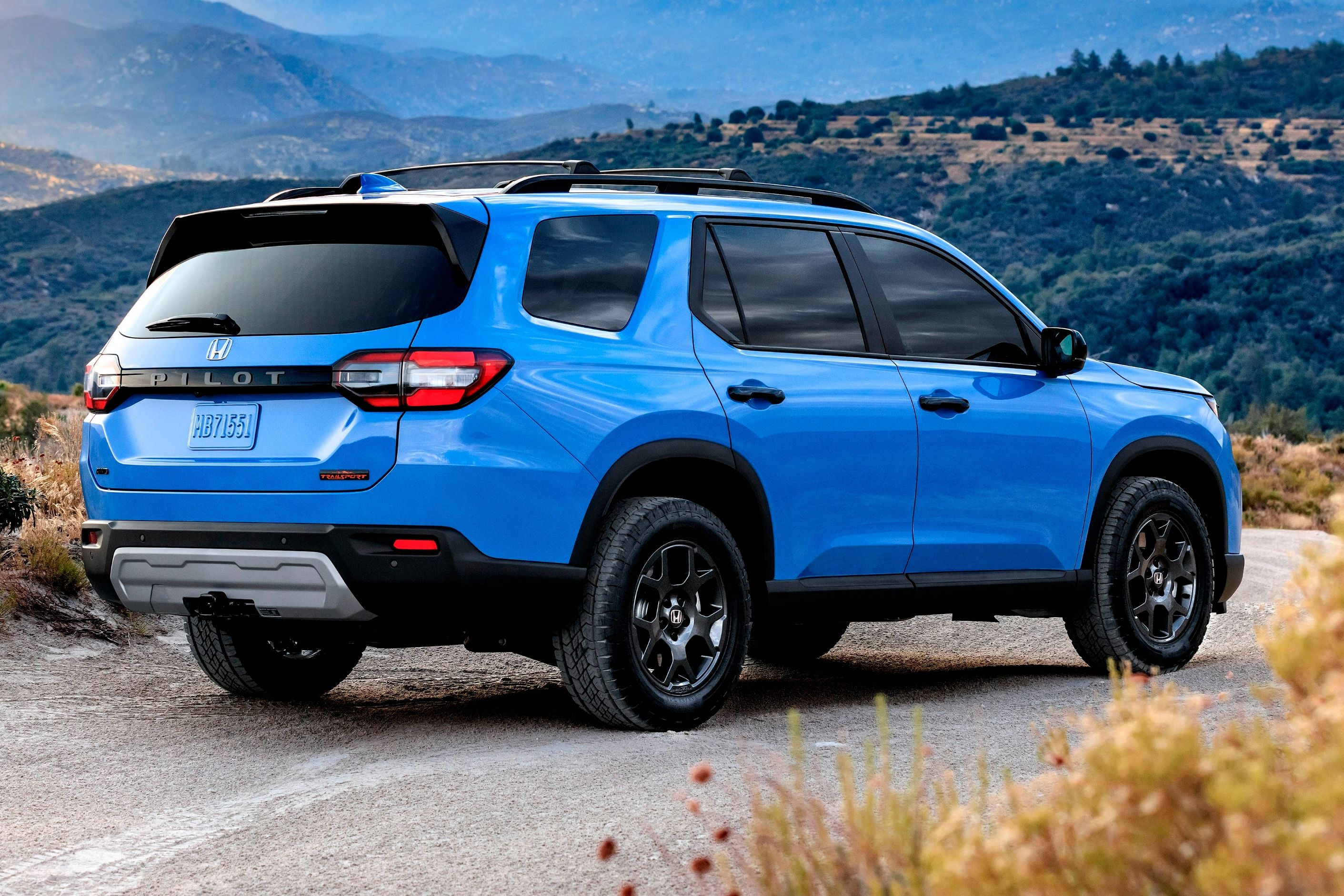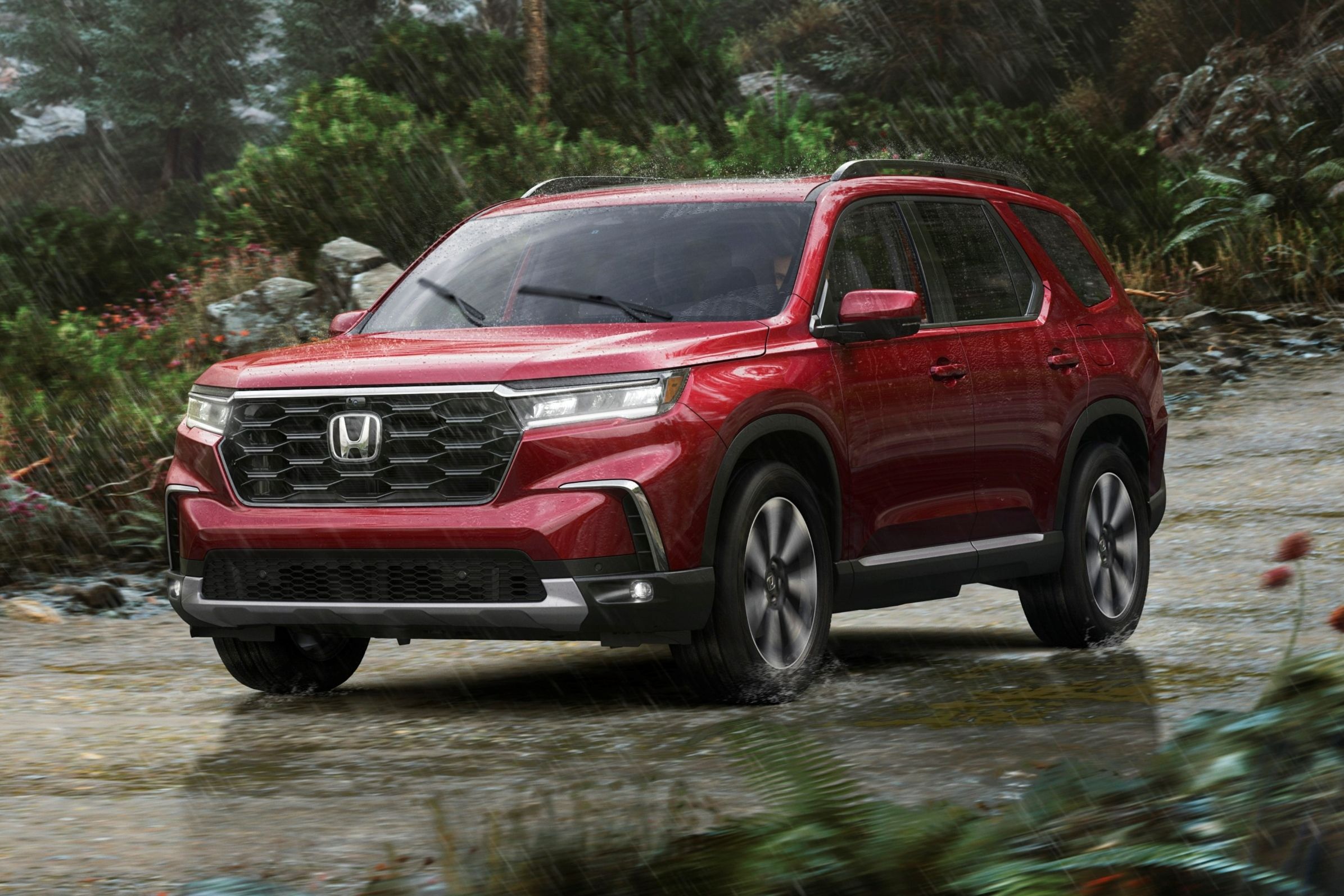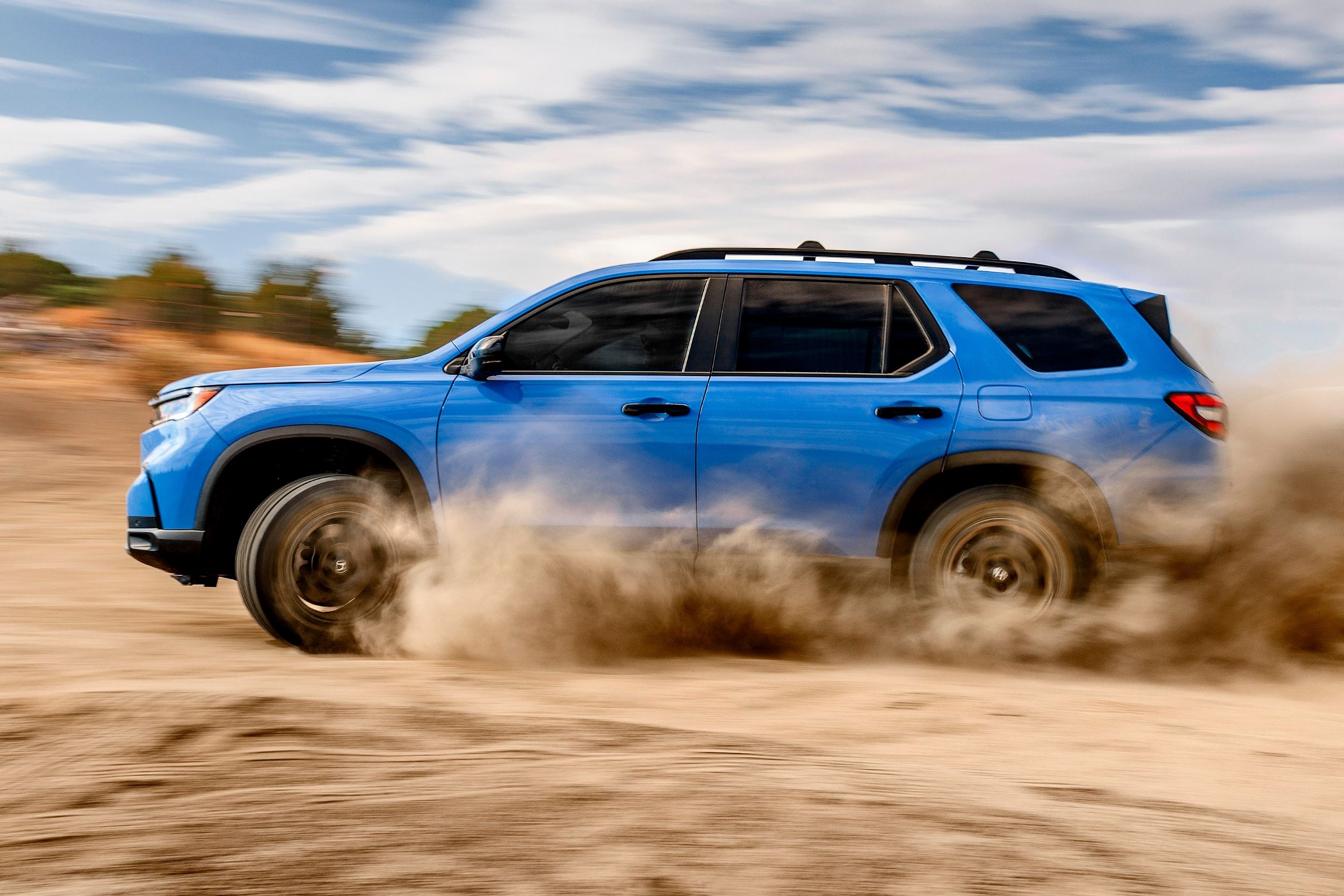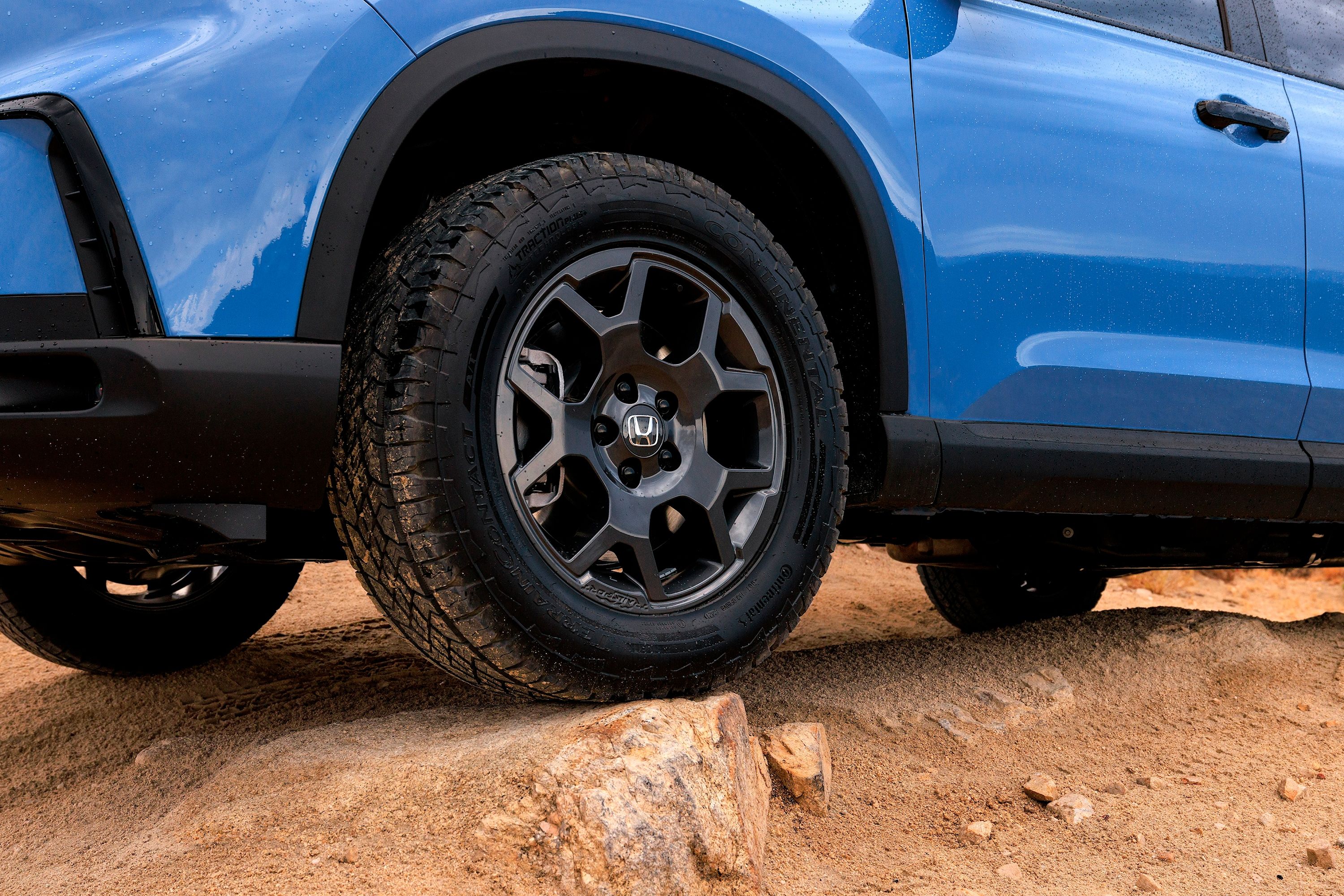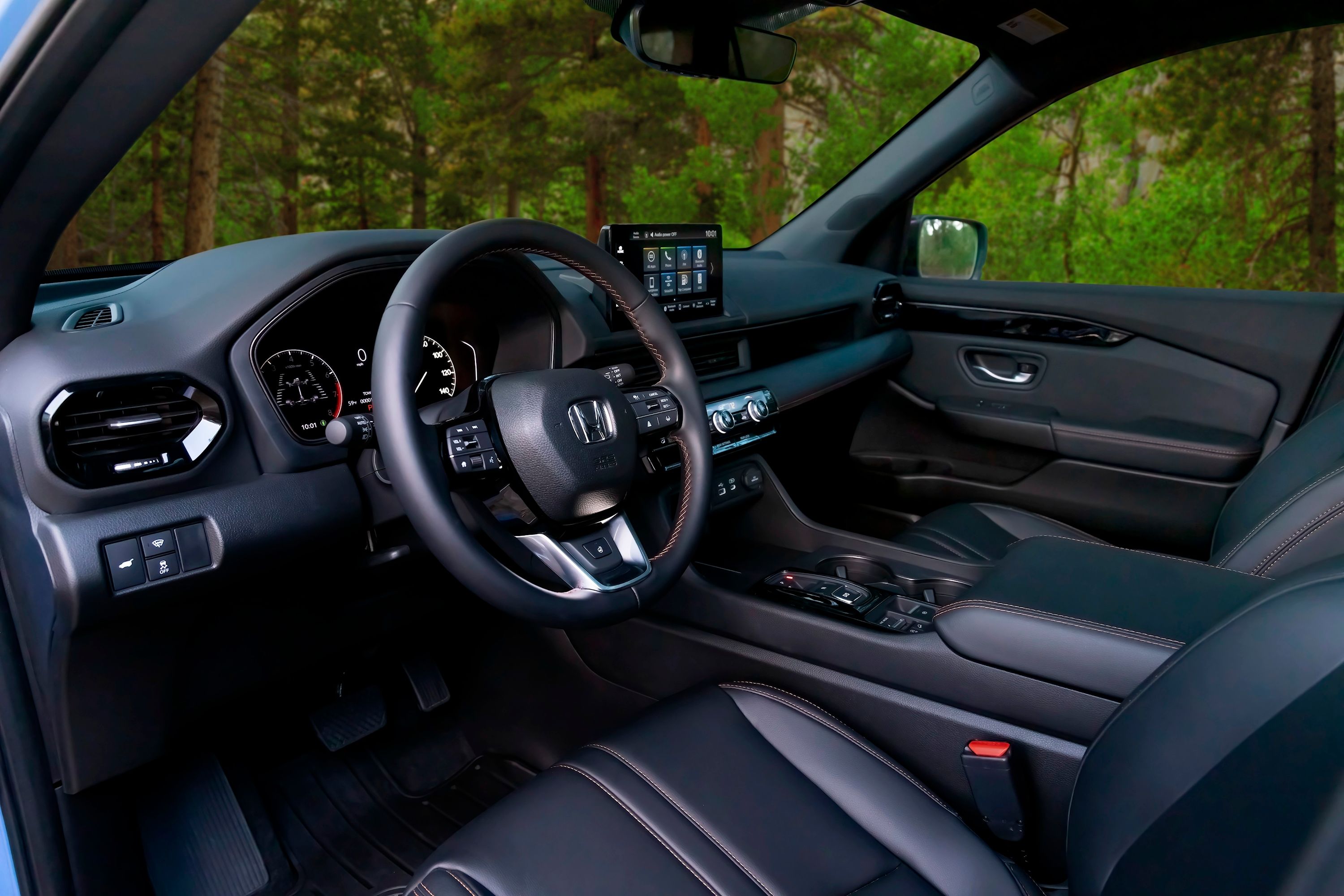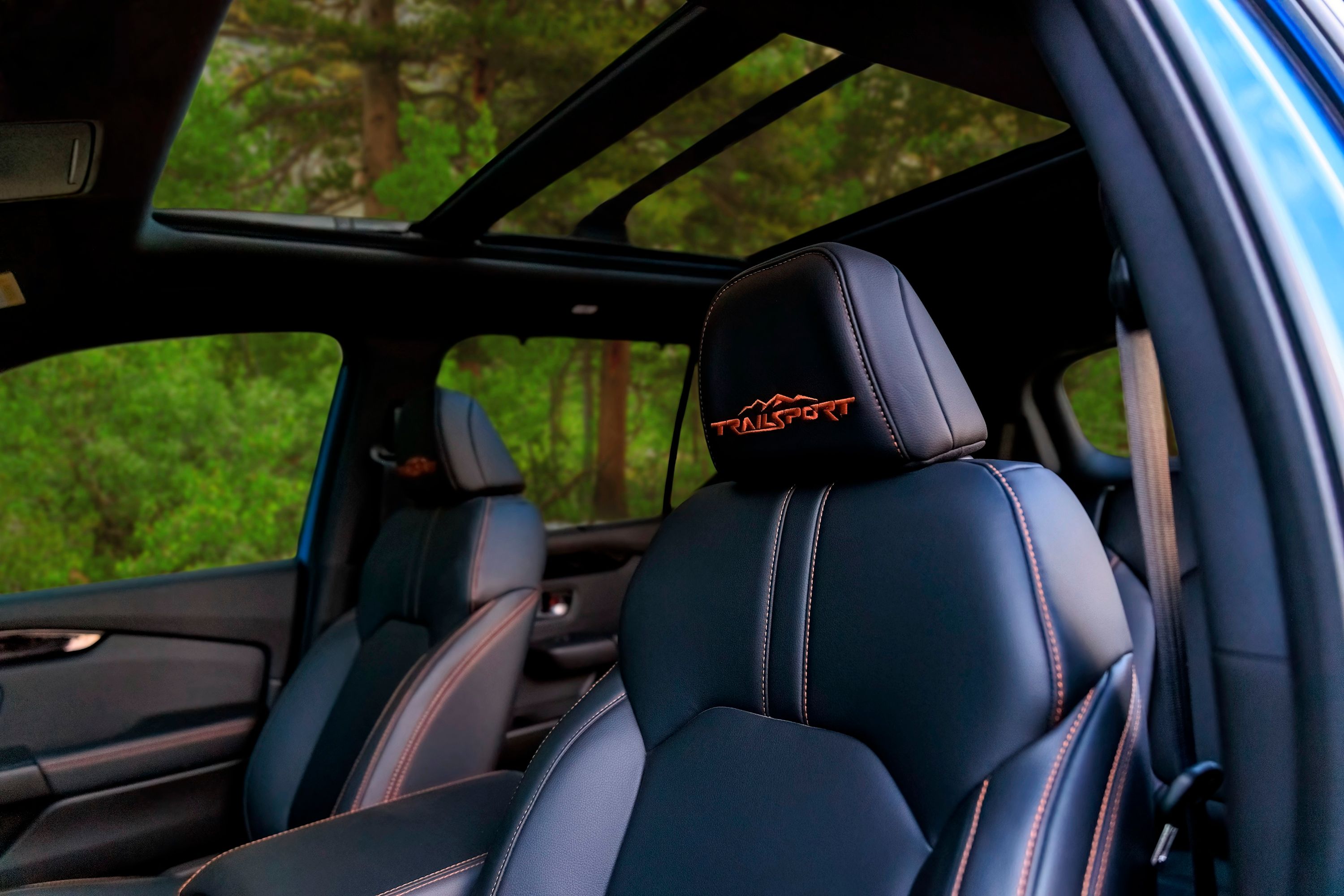2023 Honda Pilot First Look Review: The Carpooling King
Honda declared 2022 as the year of the SUV, and it has not failed to deliver on that promise. The 2023 Honda Pilot is the latest all-new model, following the arrival of the smaller CR-V. Not only is it the largest Honda SUV ever, but the fourth-generation Pilot is also its most powerful. That said, the 285-horsepower V6 still isn't quite as powerful as the engine in the superb Kia Telluride, which poses the strongest threat to the Pilot's success in the three-row midsize SUV segment. Built upon Honda's new light truck architecture, the Pilot ushers in a new TrailSport trim level with standard all-terrain tires and other kit that will suit more adventurous families. Capable it is, but can the Pilot match its posh and tech-savvy Korean rivals? Let's find out.
When Is The Honda Pilot Coming Out?
The release date for the Honda Pilot is scheduled for the the final quarter of 2022. It will be coming out in the USA in five trim levels.
2023 Honda Pilot Price And Competition
The price of the 2023 Honda Pilot begins at $39,150 for the front-wheel-drive Sport trim, representing a $1,070 increase over the base 2022 model. Other FWD trims include the EX-L eight-seater at $41,950, the EX-L seven-seater at $42,250, and the Touring at $46,450. Adding all-wheel drive to any of these derivatives will cost another $2,100.
The AWD-only lineup includes the TrailSport at $48,350 and the Elite at $52,030. All prices exclude a destination charge of $1,295.
The previous Pilot lacked the technology and stylish design of rivals like the Kia Telluride and Hyundai Palisade, and these vehicles will remain tough to beat. The 2023 Telluride begins at an appealing $35,690, while the 2023 Palisade comes in at $35,250. Both of these Korean crossovers do just about everything well.
New Honda Pilot Exterior And Colors
The previous Pilot failed to impress with its dowdy, minivan-esque styling, and the exterior of the new Honda Pilot aims to rectify this. It's obviously related to the CR-V and sports a blockier, more rugged appearance than before. The upright grille, flared fenders, and powerful horizontal beltline give it a solid and more masculine look. Honda has adopted a longer dash-to-axle ratio by virtue of a longer hood and A-pillars that have been pulled back. At the back, there is a roof spoiler and new LED taillights.
However, it's not what we'd call a revolutionary design, and more basic trims look a little bland. Wheel sizes range between 18 and 20 inches, and the Sport comes with gloss black trim and a black grille bar, black roof rails, and a chrome exhaust garnish. The EX-L substitutes some of the black trim for chrome, but it's the Touring and Elite that have the nicest exterior finishes. These two models boast a gloss black grille mesh and B-pillar, along with dual chrome exhaust garnishes and wheels with a machined finish.
The new TrailSport is the adventure-ready pick of the bunch. It rides on a raised suspension, comes with Continental TerrainContact all-terrain tires, and features steel skid plates.
Honda will, for the first time, avail the 2023 Pilot with four optional post-production packages. This will include the HPD Package with its special decals and bronze-colored wheels.
Although we don't know what all the colors for the new Honda Pilot SUV will be, the press pictures include a vibrant red. A distinctive Diffused Sky Blue is also available for the TrailSport.
Honda Pilot Dimensions
As the largest SUV from the Japanese marque, it is no surprise that the new Honda Pilot's dimensions have swelled. The wheelbase is longer, the tracks are wider, and the length has increased by 3.4 inches.
To that end, the new Pilot has a length of 199.9 inches, a height of 71 inches, and a width of 78.5 inches. There are minor variations, though; the TrailSport is longer and taller at 200.2 and 72.2 inches, respectively. The EX-L is marginally shorter than the others, with a height of 70.9 inches, but all models share a 113.8-inch wheelbase.
With its growth spurt, the new Pilot is likely to be heavier than the model it replaces, but Honda has not yet shared curb weight data. For reference, the current Pilot starts at 4,030 pounds in front-wheel-drive guise.
Honda Pilot Engine And Performance
The V6 was one of the highlights of the previous Pilot. It not only sounded good but got the big SUV up to speed in a sprightly fashion. The engine in the new Honda Pilot is also a 3.5-liter naturally aspirated V6, but it now has specs of 285 hp and 262 lb-ft of torque. Torque is the same as before and power is only up by 5 hp, which is a modest increase for what Honda says is an all-new engine. Then again, perhaps there was no need to drastically overhaul an engine that does its job perfectly well in this application.
Based on independent tests, the previous Pilot took just over six seconds to get from 0-60 mph. That's perfectly acceptable for a vehicle like this. Also new is a 10-speed automatic transmission, replacing the nine-speed unit used previously. Paddle shifters are standard, but we don't expect many Pilot owners to bother with them.
While front-wheel drive is standard on lower trims, Honda's i-VTM4 torque-vectoring all-wheel-drive system is equipped by default to the TrailSport and Elite. This system now has a stronger rear differential that can handle 40% more torque, while responsiveness is up by 30%. Not only can 70% of the engine's torque be sent to the rear axle, but 100% of that can be directed to either the right or left rear wheel. All of this enhances the Pilot's traction in slippery and off-road conditions.
TrailSport models come with five standard driving modes: Normal, Econ, and Sport are carried over, while Sport and Tow modes are new. TrailSport and other variants with AWD also come with an updated Sand mode and a new Trail mode. With AWD and the right accessories, it's possible to tow up to 5,000 lbs with the new Pilot. Previously, the new HR-V and CR-V debuted Honda's first Hill Descent Control system, and this is now standard across the Pilot range.
On normal roads, the Pilot should be even sharper and more comfortable than before thanks to a new chassis, the model's stiffest body structure yet, and wider tracks. The SUV has retuned MacPherson struts in front and a new multi-link suspension at the back, while lateral rigidity is up 60% in front and 30% at the back. Braking performance has also improved thanks to larger 13.8-inch front brake rotors and bigger calipers.
Gas Mileage
With the V6's new Variable Cylinder Management system and the transmission's extra ratio, the new Honda Pilot seems like it should be slightly more efficient than before, but Honda's published figures say otherwise. The outgoing Pilot managed 20/27/23 mpg city/highway/combined with FWD and 19/26/22 mpg with AWD. The current Pilot TrailSport is 1 mpg heavier on average. According to Honda, the 2023 Pilot manages best figures of 19/27/22 mpg with FWD and 19/25/21 mpg with AWD. As before, the TrailSport is the least efficient with 18/23/20 mpg.
The outgoing Pilot had a fairly large 19.5-gallon gas tank, so at least it could travel almost 450 miles between refills. Honda hasn't yet said what size tank the new one has.
Honda Pilot Interior And Cargo
This remains a superb family vehicle inside. The interior of the new Honda Pilot can seat up to eight occupants across three rows. It's not only the seating that impresses, as the Honda Pilot has more cargo space than it ever has before, with up to 22.42 cubic feet behind the third row - that's nearly six cubes more than the outgoing model. Honda hasn't specified how much space there is behind the second row, but behind the first row, there is a commodious 113.67 cubes.
As expected, it's a supremely practical and versatile space. In the Touring and Elite, there is a multi-function removable second-row middle seat that Honda says is a first for the segment. This seat can be stored elsewhere or under the rear cargo area floor, and when this is done, there is a wide pass-through for easier access to the third row. Simply folding this middle seat provides captain chair-style seating for the two passengers in the second row, as they can then access a wide center console with cupholders. Second-row occupants also have 2.4 inches more legroom and seats that can recline further than they could before.
Continuing with practicality, the Pilot has 14 large cupholders dotted around the cabin, while Honda has brought back the passenger-side instrument panel shelf. On the Elite, the Honda Pilot's seats are finished in classy, perforated leather upholstery, while leather comes on the EX-L and Touring. The TrailSport has orange contrast stitching and the TrailSport logo embroidered on the headrests.
The driver and front-seat passenger are presented with a typically straightforward dashboard layout, and they sit on new Body Stabilizing seats that reduce fatigue over longer journeys. Honda could've come up with a design with a bit more flair, but this is a family SUV, not a sports car, so it needs to work well above all else. The base Sport comes with a disappointingly small seven-inch touchscreen display; by comparison, you get a standard 12.3-inch display in the Kia Telluride. All other Pilot trims have a larger nine-inch HD touchscreen, along with wireless Apple CarPlay and Android Auto (wired on the Sport).
The Elite is the only trim with a 10.2-inch digital instrument display, while both Elite and Touring derivates have a 12-speaker Bose sound system and an opening panoramic sunroof.
Safety has been carefully considered, with eight airbags, a new rear seat reminder, traffic jam assist, low-speed braking control, and traffic sign recognition being standard. Prior safety technologies have also been optimized: there is a new camera with a wider 90-degree field of view and wide-angle 120-degree radar, while the blind-spot information system now covers 82 feet of radar range. The adaptive cruise control and lane-keep assist features have been reworked for more natural responses, too.
The TrailSport comes with its own tech highlights for safer and more enjoyable off-roading, including a TrailWatch camera system with four exterior cameras and four camera views. TrailWatch automatically activates and deactivates as speeds rise and fall, switching on at slower speeds when drivers are likely to encounter tougher obstacles.

